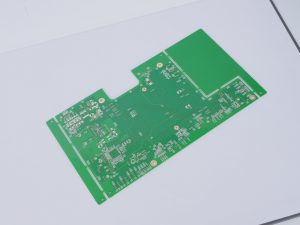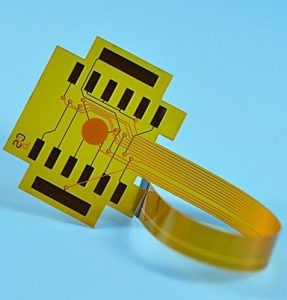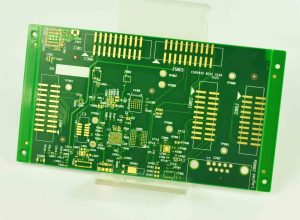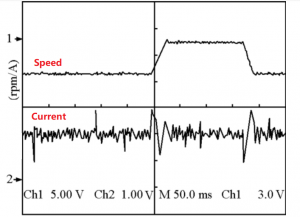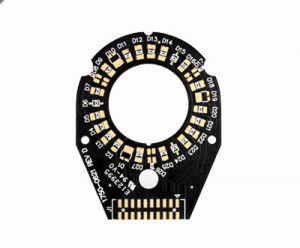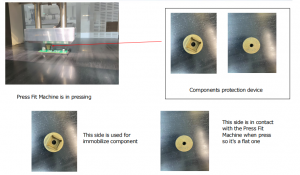What is an HDMI RF Modulator?
An HDMI RF modulator is a device that converts HDMI signals into RF (radio frequency) signals. This conversion enables digital signals from modern HDMI-equipped devices to be transmitted via coaxial cables. These modulators are vital for connecting new devices like streaming boxes or gaming consoles to older televisions and systems that lack HDMI ports.
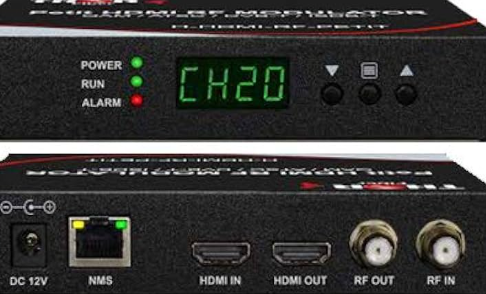
The technology serves as a bridge between the modern HDMI standard, known for its high-definition video and audio capabilities, and traditional RF systems, which are still widely used in many homes and businesses. This makes HDMI RF modulators especially useful in mixed-technology environments.
For example, in older households or setups where coaxial cables are already installed, upgrading the entire infrastructure to HDMI is costly and time-consuming. An HDMI RF modulator offers an efficient solution by ensuring compatibility without the need for major modifications.
Features of an RF HDMI Modulator
RF HDMI modulators come with a variety of features that enhance their usability. Below are some notable ones:
Resolution Support: Most HDMI RF modulators support multiple resolutions, ranging from standard definition (SD) to full high-definition (HD). This ensures that users can enjoy clear video quality regardless of the device or display.
Channel Selection: Many modulators allow users to select specific RF output channels. This feature is beneficial when integrating the device into an existing system where certain channels are already in use.
Signal Amplification: High-end models include built-in amplifiers to boost signal strength. This reduces interference and ensures consistent quality, even over long distances.
Audio Format Support: These devices handle various audio formats, ensuring that both video and sound are transmitted seamlessly.
Compact Design: HDMI RF modulators are generally small and lightweight, making them easy to install and manage.
User-Friendly Interface: Many modulators feature simple setup processes, often involving plug-and-play functionality. Advanced models might include digital displays or mobile app controls for more precise configuration.
What is the Purpose of an HDMI Modulator?
The main purpose of an HDMI modulator is to enable compatibility between HDMI-equipped devices and systems that rely on RF inputs. This capability is invaluable in scenarios where upgrading all equipment to support HDMI is impractical or unnecessary.
In homes, HDMI modulators are often used to distribute video signals from a single source, such as a streaming device, to multiple TVs through existing coaxial cables. This avoids the hassle of running multiple HDMI cables and provides a clean, centralized setup.
In businesses, modulators are essential for broadcasting presentations or video content across multiple monitors. They ensure consistent quality while simplifying installation. Similarly, in security systems, HDMI RF modulators help distribute camera feeds to older monitors without HDMI support.
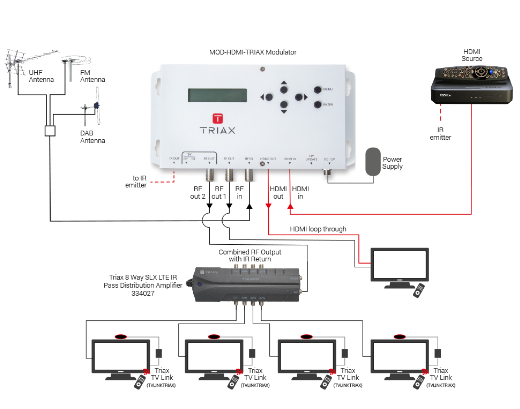
How Does an HDMI Modulator Work?
The operation of an HDMI modulator involves three key steps:
Signal Encoding: The device takes a digital HDMI signal from a source, such as a media player or gaming console, and encodes it into a format compatible with RF transmission.
Frequency Modulation: The encoded signal is modulated to a specific frequency, usually corresponding to a TV channel. This modulation allows the signal to travel over coaxial cables.
Signal Transmission: The modulated RF signal is sent to connected TVs or other devices through the coaxial cable. Users can tune their TVs to the designated channel to view the transmitted content.
Many HDMI RF modulators also include options for fine-tuning the output signal. This ensures that the video and audio quality remain consistent across different devices and setups.
Why Would I Need an RF HDMI Modulator?
There are several reasons why an RF HDMI modulator might be necessary:
Mixed-Technology Environments: If your setup includes both modern HDMI devices and older TVs, an HDMI RF modulator eliminates compatibility issues.
Cost-Effective Distribution: Using an RF HDMI modulator is often more affordable than rewiring a building to accommodate HDMI connections.
Multi-TV Setups: In scenarios like hotels or sports bars, where the same content needs to be displayed on multiple screens, modulators simplify the process by leveraging existing coaxial cables.
Long-Distance Transmission: RF signals can travel longer distances over coaxial cables compared to HDMI signals.
Preserving Legacy Equipment: If you own older devices or displays that still function well, an HDMI RF modulator allows you to keep using them without sacrificing compatibility with newer technology.
Is RF the Same as HDMI?
No, they are different. RF transmits audio and video signals over radio waves. It is an analog technology commonly used for broadcasting TV signals through antennas or coaxial cables. However, HDMI is a digital standard that delivers high-definition audio and video through a single cable. It supports advanced features like 4K resolution and multi-channel audio.
While RF offers greater versatility for long-distance signal distribution, HDMI provides superior quality and reliability. HDMI RF modulators combine the strengths of both technologies, offering a practical solution for mixed setups.
How to Improve HDMI Signal?
To maintain optimal HDMI signal quality, follow these tips:
Use Quality Cables: High-quality HDMI cables with proper shielding reduce signal interference.
Avoid Excessive Lengths: Long HDMI cables can weaken signals. Use a signal booster or repeater if long cables are necessary.
Check Connections: Loose or damaged connectors can disrupt the signal. Regularly inspect and maintain your cables.
Minimize Interference: Keep HDMI cables away from power lines or devices that emit electromagnetic interference.
Update Firmware: Ensure your devices are running the latest firmware, as updates often improve compatibility and performance.
How Do I Know if My HDMI is Working Properly?
Testing your HDMI connection is straightforward.
Check the Display: A working HDMI connection should display clear video and audio.
Inspect the Cable: Look for visible damage or wear on the cable.
Swap Devices: Test the cable with another device to identify whether the issue lies with the cable or the device.
Look for Visual Cues: Flickering screens, color distortions, or missing audio are common signs of a faulty connection.
Regular maintenance and using quality equipment reduce the likelihood of connection issues.
Applications of HDMI RF Modulators
Home Entertainment: Homeowners use these modulators to connect streaming devices, Blu-ray players, or gaming consoles to older TVs. They also simplify distributing content to multiple rooms without needing multiple HDMI cables.
Commercial Use: Businesses, especially in hospitality and retail, use HDMI RF modulators to broadcast advertisements or information across multiple screens.
Educational Institutions: Schools and universities rely on these devices to distribute educational content to multiple classrooms, leveraging existing coaxial networks.
Security Systems: Many surveillance setups use HDMI RF modulators to transmit camera feeds to monitors that may not support HDMI.
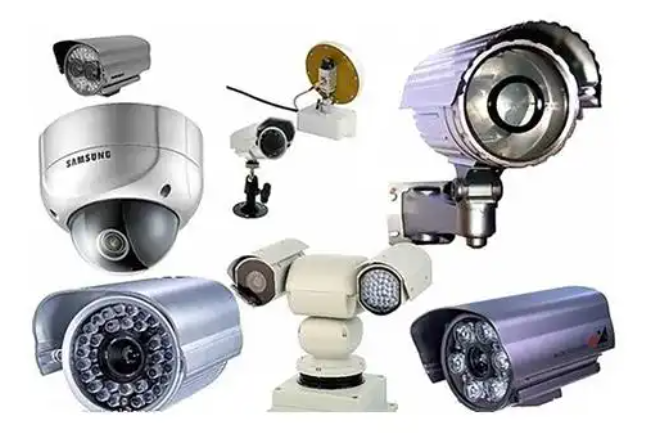
Event Management: Modulators are used at large events to broadcast live feeds or presentations to multiple displays around the venue.
Whether you need to connect multiple TVs in your home, distribute content in a commercial setting, or maintain an efficient security system, an HDMI RF modulator is a practical and reliable solution. Choose a high-quality HDMI RF modulator for an efficient, hassle-free experience that keeps your devices connected and your system running smoothly.



